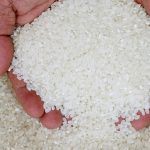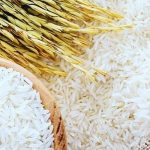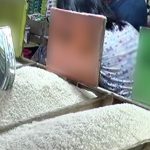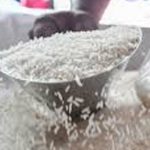SA ginagawang pagpapataw ng suggested retail price (SRP) sa mga produkto ng pangsakahan, pinag-iisipan ngayon ng Department of Agriculture (DA) ang paglalagay ng label at pagpapakete ng produkto ng bigas sa merkado para masiguro ang kaligtasan ng pangunahing pagkain ng Pinoy.
Sinabi ni Agriculture Secretary Emmanuel F. Piñol, na binubusisi ng DA ang ilang mga gawain sa kasalukuyan pagdating sa bilihan ng bigas kasama kung paano ito ipinapakete at nilalagyan ng label ng mga retailer at mga tagakiskis.
Sinabi ni Piñol, na ang pagpapataw ng labeling sa mga produkto ng bigas ay makatutulong sa pagmo-monitor ng DA sa pagpapatupad ng SRP sa bigas na nakatakdang simulan sa susunod na linggo.
“We are now reviewing from the policy side of DA the practice of rice retailers in the industry wherein they will just put-up all sorts of tags to their rice like blue diamond, long-grain. We’re doing to it to justify pricing,” pahayag ni Piñol sa isang panayam.
“It should be properly labelled [based on its variety] like is it well-milled, regular-milled or fancy rice. So we can regulate the price,” dagdag ni Piñol.
Batid ng agriculture chief na ang merkado ng bigas ay masaya sa free trade environment pero niliwanag nito na “hindi basta-basta mapapayagan ang kahit sino na lamang ang mag-claim ng kung anong brand ang gusto nila sa kanilang produkto.”
“This is what the President is saying during our last Cabinet meeting about truth in advertising,” ani Piñol. “For example, if this is denorado variety then it should be true to its price.”
Bukod pa rito, sinabi ni Piñol na kinokonsidera nila ang pangangailangan sa mga tagakiskis at retailer na ipakete ang kanilang produkto ng may tamang labeling at indikasyon ng timbang. Ito ang dapat para masiguro ang kaligtasan ng bigas, dahil ito ay basta na lamang nabebenta sa mga bukas na kahon o sako sa merkado, ayon pa kay Piñol.
“In the context of ensuring food safety, we are even looking at implementing in the future a system where rice should not be sold in opened boxes in stalls. It is not hygienic,” sabi niya.
“What if a buyer coughs, then the virus gets into the rice. What if a leper touches the rice?” dagdag niya.
Isa sa mga hakbang na tinitingnan ng DA ay ang pangangailangan sa mga rice retailer at mga tagakiskis na ipakete ang kanilang produkto sa tig-1 kilo, 2 kilo, 5 kilo, at iba pang pagpapakete, ayon kay Piñol.
Sa ganitong implementasyon, ito ang magbibigay-daan sa DA para magkaroon ng pagsubaybay ng kung paano ibinibenta ang bigas sa merkado, ani Piñol.
“This will allow us to have a traceability [system]. We would know from what specific rice mill this product came from,” sabi niya.
Sinabi ni Piñol na ang hakbang ay isasagawa agad-agad pero isa ito sa mga gagawing polisiya ng departamento pagdating sa kaligtasan sa pagkain. Dagdag pa ni Piñol, na ang pagkilos ng Food Safety Act of 2013 ay para sa pagsasagawa ng pakete at labeling requirement.
Sa ilalim ng Food Safety Act of 2013, responsibilidad ng DA na siguruhin ang kaligtasan ng pagkain sa “primary production at post-harvest stages ng food supply chain and locally produced or imported” products.
“The DA shall be responsible for the development and enforcement of food safety standards and regulations for foods in the primary production and post harvest stages of the food supply chain,” ayon sa Section 16 ng batas.
“It shall monitor and ensure that the relevant requirements of the law are complied with by farmers, fisherfolk and food business operators,” dagdag pa niya.
Sinasabi rin ng Food Safety Act of 2013 ang pangangailangan ng traceability system sa food chain ng bansa.
“Traceability shall be established for foods at relevant stages of production, post harvest handling, processing or distribution, when needed to ensure compliance with food safety requirements,” aniya.
“The rule on traceability shall also cover production inputs such as feeds, food additives, ingredients, packaging materials and other substances expected to be incorporated into a food or food product,” dagdag pa nito. JASPER EMMANUEL Y. ARCALAS










Comments are closed.